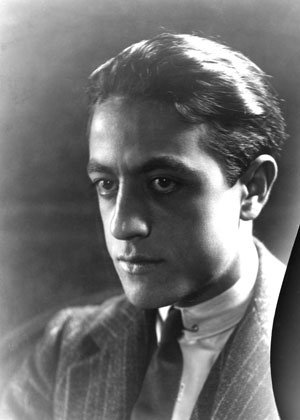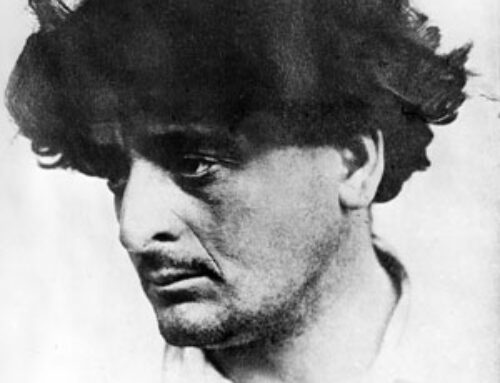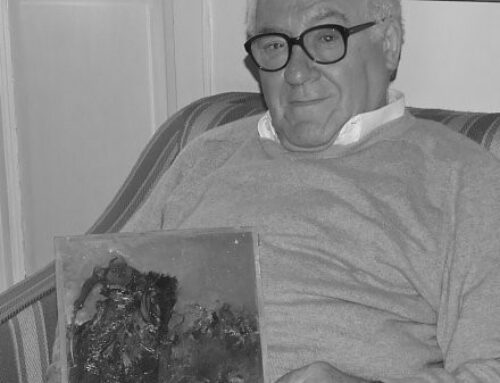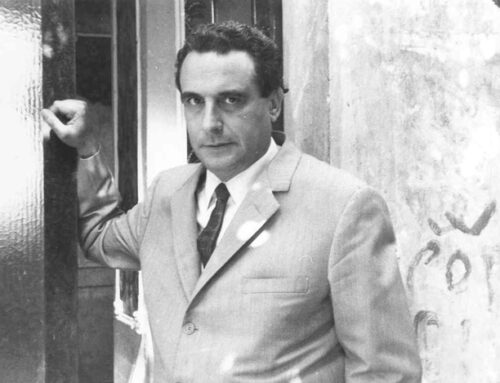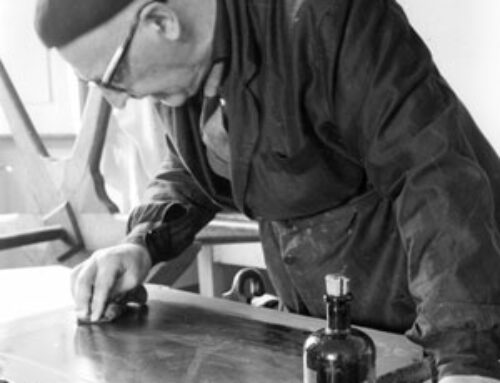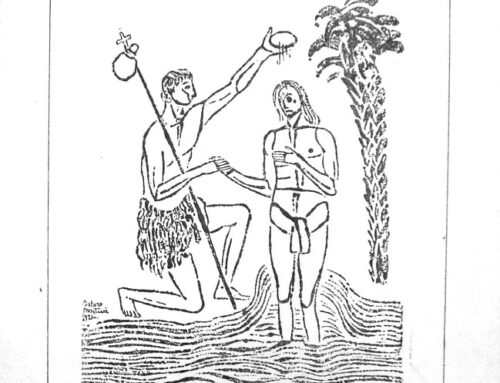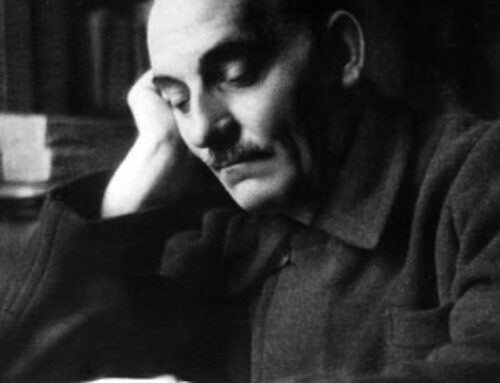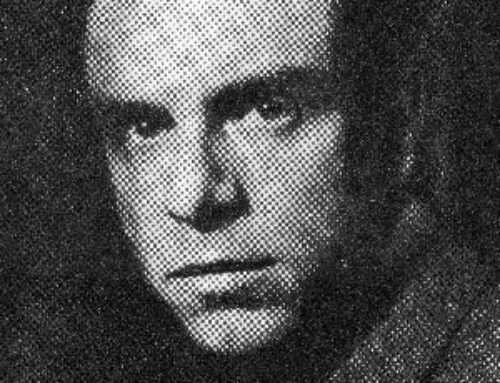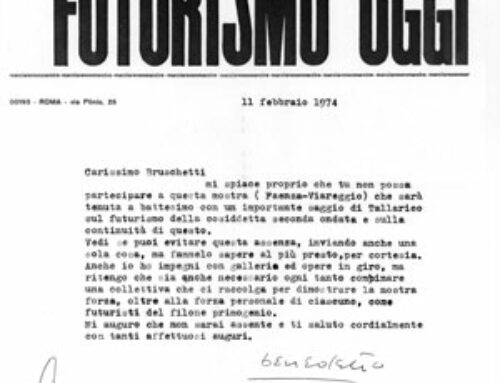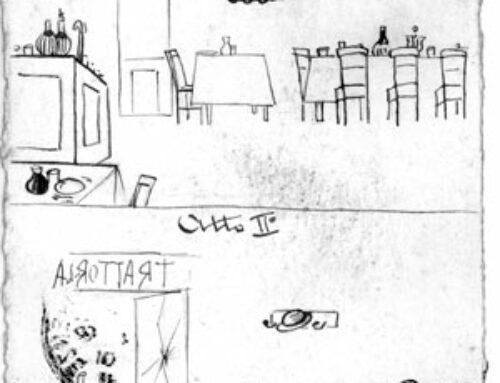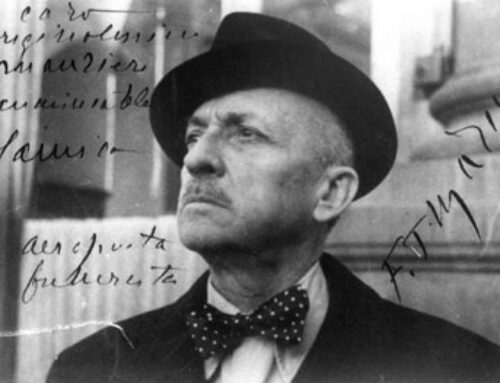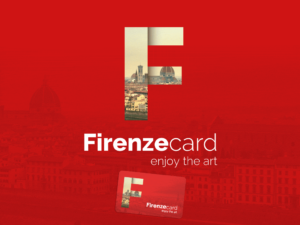(Florence, 1900 – ivi, 1988), an artist and writer, painted his first picture, a self-portrait on cardboard, when he was only eleven; at thirteen he composed the musical work “Romanza per violino e pianoforte,” and at the Futurist exhibition organized by “Lacerba” in 1913, he met Soffici, Marinetti, Palazzeschi and Papini. The latter gives him a postcard with a dedication “To the youngest and most intelligent visitor to the Futurist Exhibition.” In 1917 he formed the Florentine Futurist group with Baldessari, Ginna, Lega, Venna, the Nannetti brothers, Spina and Rosai. Between 1917 and 1921 he published a collection of poetic prose “Bottling” and came into contact with leading avant-garde figures, including Picasso. He founded with Corrado Pavolini the magazine “Il Centone” (1919) on which Rosai and Lega collaborated, and the “Enciclopedia,” a satirical pocket-sized magazine considered a rare example of Italian dada. In 1920 he published “The Builder’s Fanfare” and participated in major futurist exhibitions in Italy and abroad. In 1928 he contributed with Leonida Rèpaci to the founding of the Viareggio Prize and from 1935 to 1939 he collaborated with the Maggio Musicale Fiorentino creating sets, sketches and costumes. In 1941 he held the chair of painting at the Academy of Fine Arts in Florence, where he exhibited with De Chirico. In 1962 an exhibition was organized at Palazzo Strozzi to celebrate the fiftieth anniversary of his painting, and in 1980 a massive exhibition was dedicated to him in the White Room of Palazzo Pitti. In the same year the Foundation bearing his name was born, the book “Old Bicycle New” saw the light of day and in 1983 “The Blackbird’s Gorge,” his autobiography in the form of an interview given to Gabriel Cacho Millet.
The Primo Conti Archives, declared to be of considerable historical interest under Article 36 of Presidential Decree 30.11.63, was acquired by the Foundation in 1985. The archival material comprising it, some 25,000 pieces including letters, manuscripts, drawings, photographs, books, and periodicals, was painstakingly collected by the artist throughout his life, beginning in 1911 until the year of his death, 1988.
The archive has been divided during the successive sortings over the years into the following sections.
The Correspondence Section, consisting of about 13.000 units attributable to more than 2000 senders, collects letters, postcards, cards sent to Conti starting in the 1910s by numerous correspondents whom we mention here only partially: Balla, Bigongiari, Bonsanti, Bontempelli, Bueno, Cangiullo, Carrà, Costetti, De Chirico, De Pisis, Dottori, Falqui, Lega, Lisi, Loria, Marinetti, Nannetti, Negri, Nomellini, Notte, Ojetti, Palazzeschi, Papini, Pavolini, Pea, Pratella, Ragghianti, Raimondi, Russolo, Sanminiatelli, Soffici, Vallecchi. There are, moreover, many correspondents for whom the entire correspondence can be reconstructed, as Conti has kept his minute books. To name but a few, the correspondence with Abba, Aleramo, Bacchelli, Bonsanti, Carrà, De Chirico, Marinetti, Palazzeschi, Pavolini, Prezzolini, Papini, Rosai, Oietti, Moretti, Nannetti, Notte, Meriano.
The Manuscripts section, in which all of Conti’s autographs have come together, starting with the notebooks drafted in his childhood and adolescent years (the earliest certain date is 1905), the notebooks, diaries noting thoughts, poems, projects, up to the various drafts of literary works and the numerous writings on art, music, theater, religion, philosophy. This section is flanked by one that collects manuscripts of other authors who dedicated their writings to Conti (Argan, Colacicchi, Romanelli, Venturoli) and texts sent to the artist probably for his opinion.
The Photo Library section, divided into the Life and Friends Photo Library and the Works Photo Library, collects a rich and important iconographic heritage that constitutes a history in images of the Italian twentieth century, with particular cultural relevance attributable to material from the first fifty years of the century. Through the collection of photos of Conti’s life and fellow travelers and the collection of reproductions of his works, the story of the avant-garde restored to the faces of its protagonists (Marinetti, Palazzeschi, Papini, Soffici, Russolo, Balla, Carrà, De Chirico, just to name the best known) and their contribution in terms of artistic production is outlined. The Photo Library works include, in addition to the pictorial production, drawings, watercolors, mosaics, sculptures, and ceramics made by Conti.
The Library Section houses the Maestro’s private collection of more than a thousand volumes, mostly pertaining to Futurism and, more generally, the Avant-garde period. Numerous first editions can be traced back to the protagonists of that unrepeatable season: Papini, Soffici, Conti, Rosai, Ginna, Marinetti, Depero, Balla, Corradini, Palazzeschi, to mention only a few. This important book collection is flanked by a smaller section comprising publications of various kinds: opera librettos, musical scores, some print proofs of Conti’s literary works, and the important collection of exhibition catalogs from the 1910s onward.
The Press Review Section, divided by years, collects printed documentation on Conti’s private and artistic life, from his first public statements (1914-’15) until his death. These are mostly clippings among which of particular interest are those collected by Conti himself and arranged by him in six large-format albums that, taken together, constitute a kind of autobiography of the artist between public and private from the 1910s through the 1930s.
The Periodicals Section collects all the magazines that Conti personally preserved starting from the historical Futurist titles such as “Lacerba” and “L’Italia Futurista,” to the collection of “Valori Plastici,” some issues of Marinetti’s “Poesia,” “Literary Italy,” and “Literary Fair,” through unpublished and peculiar experiences such as those witnessed by the magazine “Il Centone” and the collection of the small Florentine magazine “L’Enciclopedia.” It is, in total, more than five hundred newspapers that constitute a heritage of unquestionable value for documenting not only the period of the Historic Vanguards but also the entire troubled history of the first and second postwar period (“The Voice,” “The Diana,” “Avanscoperta,” “The Fascist Regime,” “Field of Mars,” “The Ligurian Riviera,” “The People’s Gazette,” “The Empire,” “The World,” etc.).
The Drawings Section includes about 200 pieces datable between 1912 and 1983, among which stand out for technical mastery and completeness of style, the precocious school newspapers inspired by the theme of the Italo-Turkish war (1912), the numerous portraits of his wife and father (1932-1934), his daughter Maria Novella (1932-1933), his friends Corrado Pavolini and Aldo Palazzeschi (1929 and 1940), and the intense self-portraits (1938). Grouped in a separate nucleus, the sketches and opera figurines, about 85 pieces executed between 1935 and 1961, testify to his long and fruitful activity as set and costume designer in colaboration with the most prestigious Italian theaters: the Comunale and Pergola in Florence, the Opera in Rome, the Fenice in Venice, and the Teatro di Corte in Naples.
The Plates and Graphics Section collects the original plates on which Conti’s graphic works were pulled, published in the catalog “Primo Conti, General Catalogue of Graphics,” Electa, 1991.
TheMiscellaneous Section collects extremely heterogeneous material, referable to very different types, which for historical-archival reasons could not flow into the other sections. The Miscellaneous They collect, in fact, personal documentation of Conti and his family (certificates, diplomas, merits); printed material (pamphlets, brochures, posters and advertising material in general of personal and collective exhibitions and expositions); some casts of the master’s face, a head of his wife and other sculptural evidence referable to people related to Conti and his family; iconographic documentation of various kinds (numerous postcards, works in original or copies sent to him by friends, acquaintances and students). Of this vast and peculiar documentation, no list exists to date and is therefore excluded from consultation.

